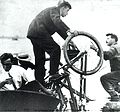| Perth, in Lanark County |
I first found out about this project from our local newspaper:
Historic mapping project plots historic roots in Lanark County
Barry Crampton wishes his younger self had paid attention now. “My father said, ‘One day, you’ll wish you’d paid...At the end of the 1812 war, and the Napoleonic War, military were discharged with half-pay.
“(We can) use technology to tell the story of a settlement,” said Crampton, which “can be retrieved for generations to come.”
They sent them off to Canada, where they were the responsibility of the Military for three years. The UK was needing to put these soldiers somewhere. They divvied up the land in these bizarre, rectangular parcels, which totally disregarded the lay of the land, the geology and the quality of the land.
I've written elsewhere about the incredible lack of soil in the area: Flora, fauna, geology of Lanark County The swamps are amazing, like my frog pond, where flora and fauna abound, just not at great depths. Sadly, farming cows isn't a really good option on all plots. Those with land grants were required to clear the land, and open the roads in front of their property. One didn't get title until this was done, sometimes not until 1825, for example. Some gave up and abandoned their land, others came to see it, then left, others sold the land and moved on. It must have been a monumental task.
Families drew land parcels by lottery, and if they didn't like what they pulled, they were able to pull a total of three times.
The bizarre divvying up of the lots left some on one side or another of the lakes, bogs and rivers. Murphys Point Park land was appropriated to establish the park. That must have been difficult for these families who had cleared the land, then worked it. Rather than farming, some mined mica.
 |
| Some land was set aside for clergy and crown, you can see the extensive work done colour coding this map. |
What the township has forgotten is that this land was land belonging to the Algonquins. Algonquin Land Claims Ontario.There was a presentation to council to remind them of this fact.
"A Call to Recognize on Whose Land We Live" by Maureen Bostock
The following was delivered by Maureen Bostock, of Lanark County Neighbours for Truth and Reconciliation, to Perth Town Council on March 1, 2016. While Perth is celebrating its 200th anniversary, the Algonquin people have lived in this unceded territory for some 8,000 years. The establishment of the Town was in contradiction to British law and the Royal Proclamation of 1763, which stated that no land could be granted to settlers without a prior agreement between First Nations and the Crown.
It reads in part...
From At Home in Tay Valley, The Omamiwinini, a chapter written by Paula Sherman quotes Kaondinoketch an Omamiwinini leader from 1840 addressing a council meeting: “Our hunting
 |
| old fencing –in the middle of the wetland |
grounds that are vast and extensive and once abounded in the richest furs and swarmed with deer of every description are now ruined. We tell you the truth, we now starve half the year through and our children, who were accustomed to being comfortably clothed, are now naked. We own, brother, that we are partly the cause of these present misfortunes; we were too good and generous; we permitted strangers to come and settle on our grounds and to cultivate the land; wood merchants to destroy our valuable timber, who have done us much injury, as by burning our rich forests, they have annihilated our beaver and our peltries, and driven deer away.”
The chapter also records the Omamiwinini people’s response to the actions of newcomers:“When they came across Philemon Wright cutting down their sugar bush in the early 19thcentury, they were quite upset, and questioned him about his actions. From what I can tell from the documentary evidence and oral tradition around the incident, Wright lied and told them he had papers given to him by the Colonial Office. This was untrue as it turns out; he was a land speculator from Massachusetts and had no such papers.
 |
| Wetland, with the leaves down, you can see where the forest begins again. |






































